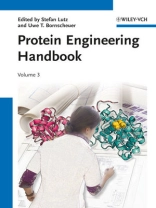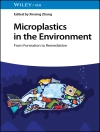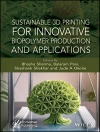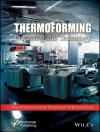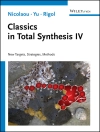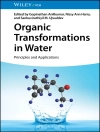This introduction collects 17 innovative approaches to engineer novel and improved proteins for diverse applications in biotechnology, chemistry, bioanalytics and medicine. As such, key developments covered in this reference and handbook include de novo enzyme design, cofactor design and metalloenzymes, extremophile proteins, and chemically resistant proteins for industrial processes. The editors integrate academic innovations and industrial applications so as to arrive at a balanced view of this multi-faceted topic.
Throughout, the content is chosen to complement and extend the previously published two-volume handbook by the same editors, resulting
in a superb overview of this burgeoning field.
विषयसूची
PREFACE
DIRIGENT EFFECTS IN BIOCATALYSIS
Introduction
Dirigent Proteins
Solvents and Unconventional Reaction Media
Structure and Folding
Structured and Unstructured Domains
Isozymes, Moonlighting Proteins, and Promiscuity: Supertalented Enzymes
Conclusions
PROTEIN ENGINEERING GUIDED BY NATURAL DIVERSITY
Approaches
Protocols
Future Directions
Conclusions
PROTEIN ENGINEERING USING EUKARYOTIC EXPRESSION SYSTEMS
Introduction
Eukaryotic Expression Systems
Conclusions
PROTEIN ENGINEERING IN MICRODROPLETS
Introduction
Droplet Formats
Perspectives
FOLDING AND DYNAMICS OF ENGINEERED PROTEINS
Introduction
Proof-of-Principle Protein Designs
Proteins Designed for Function
Conclusions and Outlook
ENGINEERING PROTEIN STABILITY
Introduction
Power and Scope of Protein Engineering to Enhance Stability
Measurement of a Protein’s Kinetic Stability
Developments in Protein Stabilization
ENZYMES FROM THERMOPHILIC ORGANISMS
Introduction
Hyperthermophiles
Enzymes from Thermophiles and Their Reactions
Production of Proteins from (Hyper)Thermophiles
Protein Engineering of Thermophilic Proteins
Cell Engineering in Hyperthermophiles
Future Perspectives
ENZYME ENGINEERING BY COFACTOR REDESIGN
Introduction
Natural Cofactors: Types, Occurrence, and Chemistry
Inorganic Cofactors
Organic Cofactors
Redox Cofactors
Concluding Remarks
BIOCATALYST IDENTIFICATION BY ANAEROBIC HIGH-THROUGHPUT SCREENING OF ENZYME LIBRARIES AND ANAEROBIC MICROORGANISMS
Introduction
Oxygen-Sensitive Biocatalysts
Biocatalytic Potential of Oxygen-Sensitive Enzymes and Microorganisms
Anaerobic High-Throughput Screening
Conclusions and Outlook
ORGANOMETALLIC CHEMISTRY IN PROTEIN SCAFFOLDS
Introduction
Protocol/Practical Considerations
Goals
Summary
ENGINEERING PROTEASE SPECIFICITY
Introduction
Protocol and Practical Considerations
Concepts, Challenges, and Visions on Future Developments
POLYMERASE ENGINEERING: FROM PCR AND SEQUENCING TO SYNTHETIC BIOLOGY
Introduction
PCR
Sequencing
Polymerase Engineering Strategies
Synthetic Informational Polymers
ENGINEERING GLYCOSYLTRANSFERASES
Introduction to Glycosyltransferases
Glycosyltransferase Sequence, Structure, and Mechanism
Examples of Glycosyltransferase Engineering
Practical Considerations for Screening Glycosyltransferases
Future Directions and Outlook
PROTEIN ENGINEERING OF CYTOCHROME P450 MONOOXYGENASES
Cytochrome P450 Monooxygenases
Engineering of P450 Monooxygenases
Conclusions
PROGRESS AND CHALLENGES IN COMPUTATIONAL PROTEIN DESIGN
Introduction
The Technique of Computational Protein Design
Protein Core Redesign, Structural Alterations, and Thermostabilization
Computational Enzyme Design
Computational Protein –
Protein Interface Design
Computational Redesign of DNA Binding and Specificity
Conclusions
SIMULATION OF ENZYMES IN ORGANIC SOLVENTS
Enzymes in Organic Solvents
Molecular Dynamics Simulations of Proteins and Solvents
The Role of the Solvent
Simulation of Protein Structure and Flexibility
Simulation of Catalytic Activity and Enantioselectivity
Simulation of Solvent-Induced Conformational Transitions
Challenges
The Future of Biocatalyst Design
ENGINEERING OF PROTEIN TUNNELS: THE KEYHOLE –
LOCK –
KEY MODEL FOR CATALYSIS BY ENZYMES WITH BURIED ACTIVE SITES
Traditional Models of Enzymatic Catalysis
Definition of the Keyhole –
Lock –
Key Model
Robustness and Applicability of the Keyhole –
Lock –
Key Model
Evolutionary and Functional Implications of the Keyhole –
Lock –
Key Model
Engineering Implications of the Keyhole –
Lock –
Key Model
Software Tools for the Rational Engineering of Keyholes
Case Studies with Haloalkane Dehalogenases
Conclusions
INDEX
लेखक के बारे में
Stefan Lutz holds a B. S. degree from the Zurich University of Applied Sciences (Switzerland), and a M.S. degree from the University of Teesside (UK). He then obtained a Ph.D. from the University of Florida and spent three years as a Postdoc with Stephen Benkovic at Pennsylvania State University under a fellowship of the Swiss National Science Foundation. Since 2002 he has been a Chemistry professor at Emory University in Atlanta, Georgia (USA). The research in the Lutz laboratory focuses on the structure-function relationship of proteins through combinatorial protein engineering and design.
Uwe Bornscheuer studied Chemistry at the University of Hannover (Germany), where he obtained a Ph. D. at the Institute of Technical Chemistry. He then spent a postdoctoral year at the University of Nagoya, Japan, before returning to Germany to join the Institute of Technical Biochemistry at the University of Stuttgart. Since 1999 he has been Professor for Biotechnology and Enzyme Catalysis at the University of Greifswald. His main research interest is the application of engineered enzymes in the synthesis of optically active compounds and in lipid modification.
